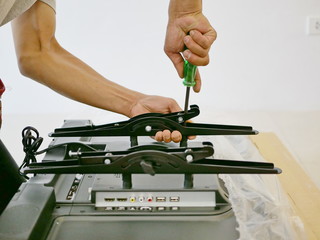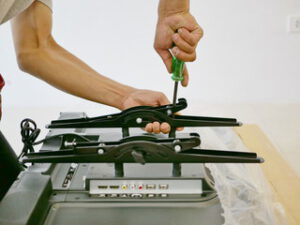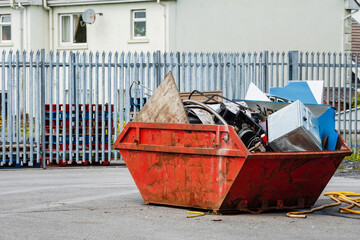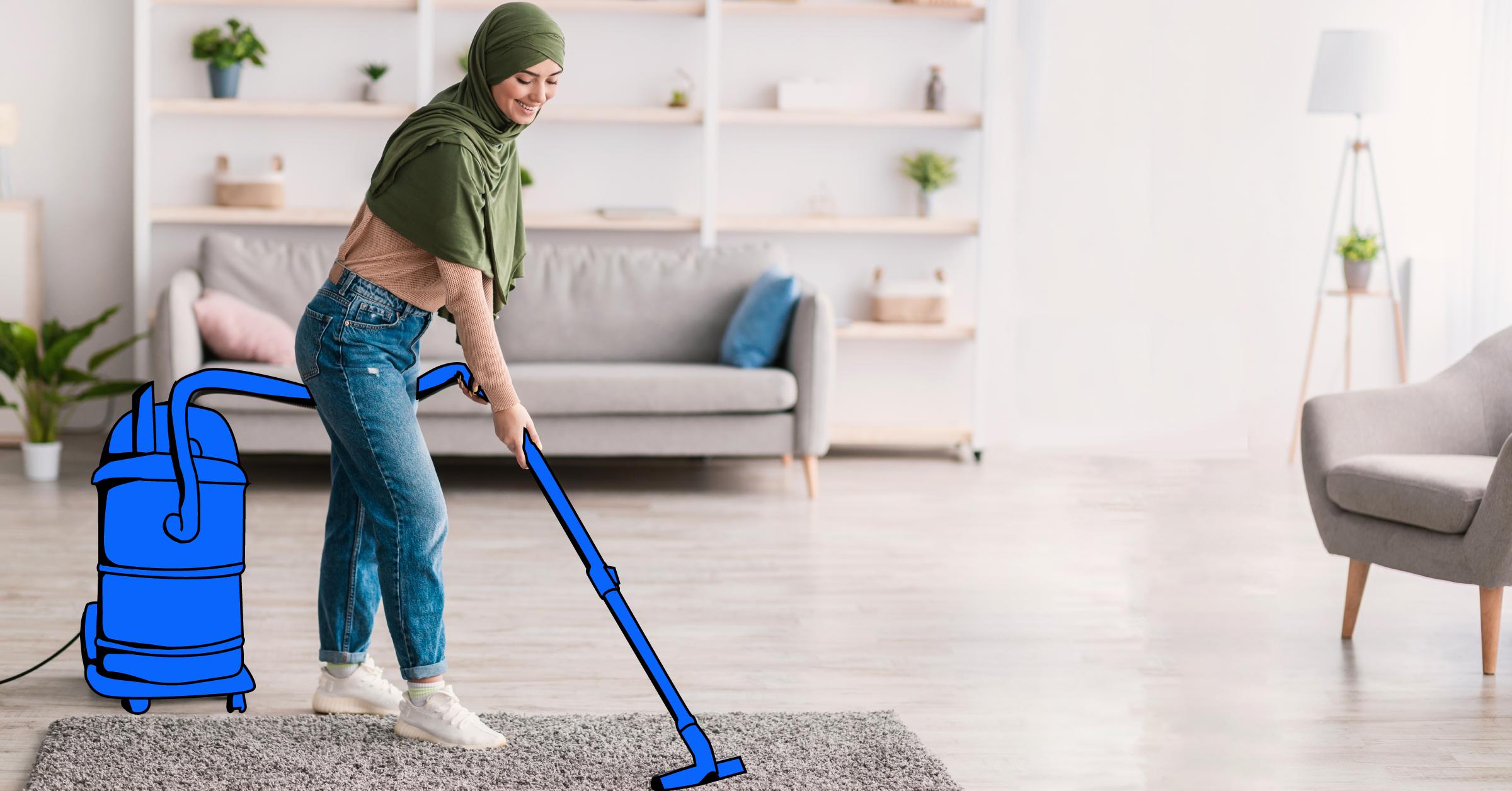 The plumbing industry relies on specialized skills. Plumbers have to complete an apprenticeship and must take specific safety precautions.
The plumbing industry relies on specialized skills. Plumbers have to complete an apprenticeship and must take specific safety precautions.
The sewer line from your home to the city sewage system or your septic tank can get clogged with food debris, toilet paper, and other waste. This can lead to a sewer backup. For your plumbing needs, call On Point Plumbing & Heating immediately.
Plumbers are tradespeople who install, repair, and maintain pipes, fixtures, and other equipment that carries water and sewage throughout buildings. They work in homes, commercial, and industrial settings and can be employed by plumbing contractors, maintenance departments, or even be self-employed. Plumbers are usually the first trade workers called when there is a plumbing emergency such as a burst pipe or clogged toilet.
Plumbers who specialize in residential plumbing systems typically focus on installing and repairing fixtures like bathtubs, sinks, showers, toilets, faucets, and drains in homes and other residential buildings. They may also be responsible for repairing or replacing water heaters and other appliances that use gas. Some plumbers specialize in commercial or industrial plumbing and may be involved in the installation of large-scale piping systems, fire sprinkler systems, and other specialized equipment.
Most plumbers undergo an apprenticeship program that lasts four to five years. This includes both classroom-based educational hours and on-the-job training under a journeyperson plumber. During this time, apprentices earn a salary and are gradually given more responsibilities. After completing the apprenticeship, plumbers must take exams to become certified.
In addition to being skilled in the installation and repair of plumbing systems, plumbers must also be familiar with building codes and regulations. They are often responsible for interpreting blueprints and ensuring that plumbing systems comply with local, state, and federal laws and standards. Plumbers also may provide customer service, including answering questions and addressing concerns.
Plumbing professionals may also be required to collaborate with other tradespeople on construction projects. This can include working with engineers and architects to ensure that plumbing systems are designed properly from the start. They may also be responsible for providing inspections and obtaining necessary permits.
Plumbers often require the use of hand and power tools to perform their job. They also need to wear safety equipment such as gloves, goggles, and masks. They may be exposed to hazardous materials such as lead, asbestos, and toxic chemicals. For this reason, plumbers must be skilled at conducting safety inspections and identifying potential hazards. Those who are interested in becoming plumbers should be comfortable with the physical aspects of the job, and enjoy working with their hands. They should also be detail-oriented and have good math skills.
Plumbing Systems
The plumbing system is a network of carefully constructed piping that brings clean water into buildings and carries wastewater, steam, and air out. It includes all the pipes, fittings, and fixtures that convey water to and from appliances such as showers, basins, toilets, kitchen sinks, and washing machines. The plumbing system also incorporates draining systems and vent pipes.
Pipes in a plumbing system can be made of metal, plastic, or ceramic. They are usually designed to carry a certain amount of water pressure and to last for a long time. For this reason, they may be sealed or lined with an inert material to prevent contamination. The type of plumbing piping used in a building depends on its purpose. For example, drinking water pipes are generally made of copper, galvanized steel, or cast iron, while sewage pipes must be resistant to corrosion and heavy loads.
During construction, the plumbing system is installed according to the structure’s blueprints. This ensures that the plumbing is consistent with the building’s design and meets applicable regulations. Plumbing work is typically performed by plumbers who are licensed by a government body to do so. The license requirements vary by country and province.
A plumbing system must have a drain stack to carry away wastewater and condensation. It is typically located in the roof area of a building or underground. The drain stack can be made of PVC, CPVC, or ABS. Unlike ordinary piping, drainage piping is designed to carry a higher level of water pressure and must be run at a greater slope (about 1:40).
Water supply pipes are normally made of copper or CPVC. They are a good choice because they are resistant to corrosion, can withstand high temperatures, and are easy to install. They are also available in a wide range of diameters to suit different applications.
Each plumbing fixture is connected to a drain through a P- or S-shaped trap. These are filled with water to keep small animals and sewer gas from entering the house. The water in the trap is replaced each time a fixture is flushed or the drain is emptied.
Main Line
Although they are out of sight, the main drain and sewer lines play a crucial role in your household plumbing. These are the lines that transport waste from your home to the city connection or your septic tank. If these lines become clogged, it can lead to serious issues in your home. In some cases, you will need a sewer line replacement.
One of the most common signs of a clogged main line is when your toilets, sinks, and showers start to back up. You may also hear gurgling noises in different areas of your home. This happens when air bubbles are trapped inside the pipes. It can be caused by blockages, root infiltration, or even old age.
Getting to the bottom of these problems is no easy task and requires professional help. Knowing the difference between a clogged main line and a clogged drain line can save you money. The fixes are different and require different tools. A plumber can inspect a main line with a camera to identify the problem and find a solution but a drain line cannot be inspected in this way.
The main line runs from the lowest point in your home to where it connects to the city sewer system or septic tank (if you have one). All of your smaller drains dump into this one pipe before exiting the house. If this line becomes clogged, it affects all of your fixtures.
Like other pipes in your house, the main line can get clogged with debris such as hair, food scraps, and grease. It can also be damaged by tree roots. Luckily, most residential sewer lines are made of 4” PVC and are buried in the ground so they can be easily replaced. The best way to prevent clogs is by having your home’s main line snaked every couple of years.
Force Mains
When the landscape can’t support a gravity-reliant wastewater system, pressurized sewer pipes—also known as force mains or riser mains—take the waste where it needs to go. Using mechanical pumps or compressors located in lift stations, the pressure in these pipes pushes wastewater up to higher elevations, where it can either continue to travel up the system or be released into a different gravity sewer.
As with their gravity sewer brethren, many force mains are aging and experiencing problems. Because these pipes are full of sewage at internal pressures that can vary from 20 to 60 psi, they must be designed to withstand fatigue failures caused by repeated cycling on and off of the pumps. Additionally, the corrosive effluent in these pipes can cause damage to pipeline materials over time.
Until recently, it was very difficult to gather high-resolution data on the condition of these pipes without taking them out of service. But with advanced technology, it’s now easier than ever for utilities to assess the condition of force mains and take a proactive approach to managing these high-consequence infrastructure assets.
With a proactive approach, utilities can reduce high-consequence failures, decrease short-term capital expenditures, and increase the confidence of their buried pipeline infrastructure. Inspecting force mains with a smart-ball test can provide the actionable data needed to identify hot spots and fast-track repairs, extending their life and improving efficiencies across their systems.
Aside from reducing costly failures and emergency repairs, a proactive approach also helps staff save money by avoiding the need to replace these vital pipes. As technology evolves, it’s becoming increasingly possible to use the same tools that have made trenchless relining so successful in water mains—such as ultrasonic inspection and pigging—on force mains.
To learn more about the potential for your wastewater system to benefit from these technologies, contact the team today. We’ll help you find the right solution to protect your aging force mains and achieve lasting value for your community. And with our flexible offerings, we’ll tailor a program that’s uniquely suited to your needs.








